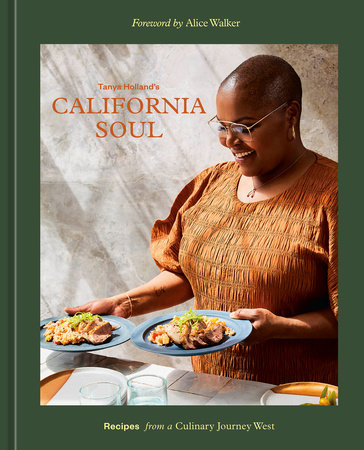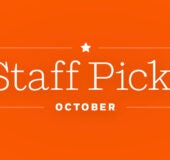IntroductionI am Black and I am African American. I use these terms interchangeably. Both are accurate descriptors. My skin is dark brown and my ancestors are from the African diaspora. I live in California and I am a Californian. I claim it all. Black belongs to the diaspora and African American is specific to my experience in the United States as a descendant of the enslaved people brought to this country from Africa by Europeans. Americans have been and still are all on the journey together. And as an African American woman, the contribution that my ancestors made to what Americans eat and how we eat is significant. No matter where we migrated from or ended up, our food comes with us and tells our story. I am contributing and this is my story. I have a California Soul.
I’m not from the South, but that’s really where my family’s story as I know it begins. My dad, Hollis, is from Virginia, and my mom, Annette, was born and raised in Louisiana. I spent many alternating summers visiting my grandparents in their respective homes. In Virginia, they raised chickens and vegetables. My Louisiana grandparents had a small vegetable garden with fruit trees, and my maternal grandfather had a little corner store that sold pickles, pralines, penny candy, and other goodies. Many of my grandparents’ siblings left the South during the Great Migration, and most of my parents’ siblings left as soon as they graduated from high school.
My parents met one summer in Oakland, and I like to think that destined my life to be there. Once married, my parents settled on the East Coast, where my dad attended college. I was born in Hartford, Connecticut, and I was just two years old when we moved to Rochester, New York, where he accepted a position as an industrial engineer with Eastman Kodak.
He and my mother found themselves building a life in this new city at the height of the Civil Rights era when reports about protests, marches, and riots across the country filled the nightly news broadcasts. At this same time, my parents founded The Gourmet Club, a dinner club they shared with five other couples, all ethnically and racially diverse friends and coworkers. Throughout this national upheaval, they were hosting and communing over food and beverages. Everyone cooked together and ate together. Everyone got along. I saw early on how sharing a meal could bring people together.
My parents were grateful for their new home, but they still longed for the family, friends, and familiar flavors they enjoyed in Louisiana and Virginia. They both cooked often, filling our home with tempting scents. My mother introduced her new friends to her gumbo, cornbread, and fried chicken. My dad made home fries for breakfast, fried apples, and baked cakes from scratch, just like his mother. These foods satisfied their nostalgia for home and gave me a sensory connection to the South.
The Great Migration took all my maternal great-aunts and great-uncles to the West Coast. My great-aunts Lottie and Susie, left Shreveport, Louisiana, and started a restaurant in Portland, Oregon, in the 1940s. Lottie and Susie’s Place had live music, and the kitchen never closed, so they served chicken dinners, barbecue, and chitlins anytime you wanted. It seems like chicken dinners and 24-7 hospitality run in my blood. Two of my other great-aunts landed in Southern California, and I still have distant cousins in the San Francisco Bay Area, where I planned to host the biannual family reunion in 2021, but obviously that was postponed!
For my first trip to California, my parents drove their green Chrysler Satellite Sebring cross-country to visit my great-aunt Vera, my maternal greatuncle’s wife. She was a schoolteacher in Oakland, California, with a hairdresser side hustle that allowed her luxuries like an eye-catching Mercedes-Benz sedan. She was impressive in many ways and, standing nearly six feet tall, spoke with a deep East Texas drawl; she was as dark and savory as the roux she created for her signature gumbo.
Aunt Vera was irreverent, a fierce multitasker, and easily our favorite auntie. I may have learned a thing or two from her. Aunt Vera moved through her kitchen like a professional chef, cooking and tasting her dishes in progress and adjusting seasonings until the flavors met her standard. She’d draft anyone standing nearby as a prep cook, doling out commands softened only by her distinctive accent that still echoes in my ear.
After that first trip, many years went by before I returned to California. But the Golden State was always on my mind—especially during the winters in Brooklyn, New York, where I last lived on the East Coast. I went out to California in 2000 to visit friends and fell in love with the landscape, architecture, slower pace, and farm to table foodways. It struck me as a perfect destination for the next phase in my career and life. I booked a flight that departed September 18, 2001, to start my new life in the West. The devastation of 9/11 shook me but made me even more determined to go—and I’ve never looked back.
When I arrived in Oakland, I wanted to learn everything about my new home, especially Black history. I heard firsthand stories of African American pioneers from local docent Jerry Thompson, as well as by visiting the local bookstore Marcus Books and art galleries helmed by Samuel Fredericks and Joyce Gordon, all featuring Black artists and writers. In West Oakland, everyone had a story of railway porters and cowboys, the real Black Panther Party in Oakland, and progressive educators, doctors, and lawyers. These people were pioneers, and I felt like I had found my people and my place.
California offered an openness to ambitious (female and Black) thought leaders and entrepreneurs that I hadn’t experienced on the East Coast. It seemed like a perfect place and time to start a new venture. I was teaching cooking classes, studying wine, and still taping my Food Network show, but I sorely missed working in restaurants. Before long, I found the right opportunity to open my own place.
Feeding people and bringing them together over food is my greatest passion, and I attended cooking school in France in the 1990s to pursue my dream of becoming a restaurateur. Plus, my family history was filled with resourceful, entrepreneurial Black women and men who used their skills, common sense, and intelligence to care for their families and improve their communities. The restaurant industry turned out to be the ideal place for me to create something unique. I began to build the culinary expertise and awareness I needed to attract investors, build a thriving business, care for my family, and nurture my newfound community.
Shortly after arriving in California, I catered for a family with three daughters. Even though the girls were aged twelve to sixteen, they asked detailed questions about whether the shrimp I was serving was wild-caught or farm-raised. Their curiosity and concern impressed me. Here in California, many people want to know and really care about where their food is sourced.
This is especially true in the Bay Area, thanks to influential Chez Panisse founder Alice Waters, who helped make seasonal eating a community value. She created the now ubiquitous farm-to-table experience. Here, people rarely eat tomatoes out of season, but instead shop at farmers’ markets year-round and wait in long lines for the best artisan bread and ice cream.
Now I have developed close relationships with farmers, growers, breeders, bakers, and coffee roasters. Through these relationships, we have formed a network that has economic, social, and environmental power. As we learn from one another about new sources of ingredients and how to work with fresh, locally grown products, the canned or preserved forms have become a thing of the past. Now I use fresh, seasonal ingredients more than 90 percent of the time, and it has transformed my cooking.
At the same time, I noticed that Oakland had very few eating establishments representing the local Black culture in an elevated way. I wanted to honor my culinary heritage and the food I learned from my parents and aunties while highlighting the brilliant flavors of California’s seasonal produce and local ingredients. Approaching food this way also let me live out my egalitarian values related to equity and sustainability. And I wanted to create a place where everyone felt welcome.
Copyright © 2022 by Tanya Holland with with Maria C. Hunt and Dr. Kelley Fanto Deetz, foreword by Alice Walker. All rights reserved. No part of this excerpt may be reproduced or reprinted without permission in writing from the publisher.













